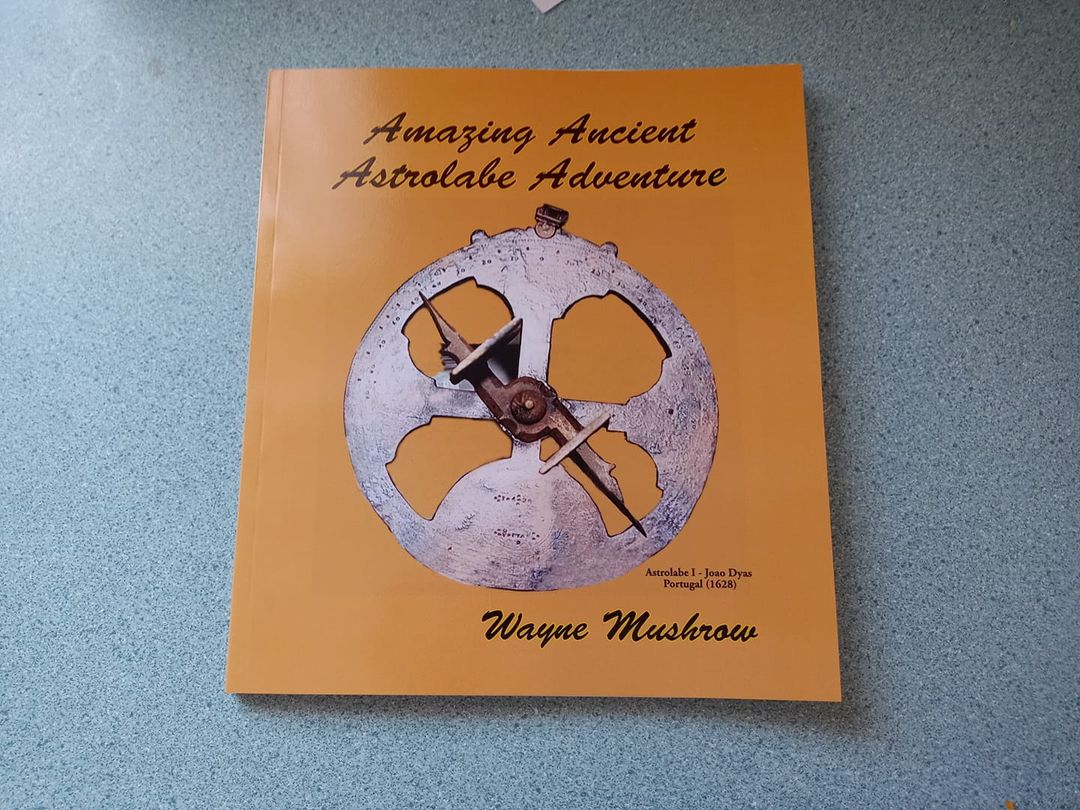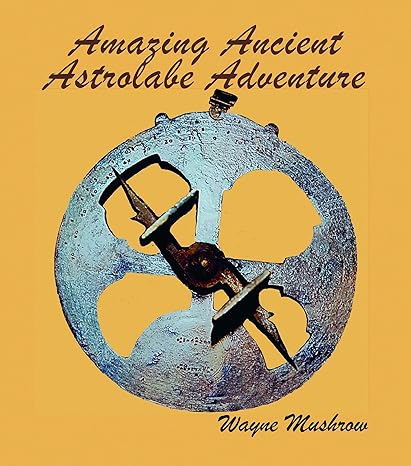Foreword to ‘Amazing Ancient Astrolabe Adventure…The Wayne Mushrow Story’
This book is essentially three stories in one that are connected: the first part portrays the early life of Wayne Mushrow, his parents and family growing up in the more difficult economic times in Newfoundland after the Great Depression and World War II, before becoming the tenth province of Canada in 1949. Many individuals or families growing up in Atlantic Canada under similar conditions will relate to what Wayne describes as an early life of ‘making do with little’, which taught him the value of hard work, resilience, patience and being supportive of family and community. Those were formative values, the basis of his character and determination that played such a large role in the rest of this story.
He describes his role as a milkman (driver and salesman) as someone who enjoyed life, worked long hours in all kinds of weather, and along the way collected dozens of friends, interesting customers, and stories/escapades that would regale you with laughter in many social settings. However, it was felt that to get to the critically important portion of his story sooner, this section was edited, shortened. Still, Wayne is always willing to entertain you with such stories… in a more social setting!
The second part of the story deals with a hobby that always intrigued Wayne – scuba diving – initially just for the thrill of it, not really knowing where it might lead — perhaps simply the solitude of being beneath the water or on some wonderous adventure. He never thought that it would lead him to working with the RCMP and others to recover drowning victims or to salvage cars or sunken boats, but it was his work-ethic and tenacity that led him to be a good diver and underwater searcher, which as he stated: “helped families to attain closure after a tragedy”. It was not something one necessarily set out to do, but became an important service to the community, something Wayne would never shy away from, being considered a duty to others in dire circumstances. He graduated from there to more hazardous commercial diving along a marine coastline as rugged as one would find anywhere in the world and often working for a major player in Newfoundland transportation and economy – Marine Atlantic.
Part three: Then something happened while out on a dive in cold weather, hoping to salvage useful metal parts off sunken ships. One would not get rich from scrap metal, but it would pay for the trips and perhaps cover the costs of new or better diving equipment. What happened next would change his life … but not entirely as one might have expected.
As they were about to leave, he spotted a shiny brass-like object on the sandy bottom. This object was larger than the portion spoking out of the sand, and encrusted in marine growth, so he threw it into his backpack. You’ll have to read the 20-year saga that followed to learn the entire story, but suffice to say, it was an ancient ship’s navigational device in nearly pristine condition, which he would later find out was very rare indeed and, in fact, priceless for its historic value. He did some online research and found it was a Portuguese mariner’s astrolabe dated 1628, then after talking with the local museum, they went to the RCMP to report the find, only to be met with shrugs regarding the legality or procedures involved in reporting it … they just didn’t know! So on to Tourism, the agency involved with artifacts. Again no one there seemed to know, or were generally uninterested, and when Wayne asked them to go “up the chain of command”, little or nothing happened – not even any apparent interest … at least for now.
So back to Google wondering just how rare and how valuable historically? The information astounded him, but what happened next is a tale that began in 1981 and lasted a total of twenty years, where the full weight of government bureaucracy was brought to bear on this ordinary citizen from Port aux Basques. Wayne had offered to donate it to the Newfoundland government, but had the audacity to ask if the artifact could be of benefit for his home community, to help tourism and the local economy, and to have his name attached to the find.
What followed was a protracted back and forth that involved bureaucrats basing decisions on erroneous information and making assumptions without proof or real knowledge, which made life very difficult for the principal in this story, and which evolved into an old-fashioned Mexican Newfoundland standoff, based on misinformation and mistrust. All of that could have been avoided. And it begs a larger question in any open society, when ranking bureaucrats keep information in departmental files that was not independently verified, or just plain untrue, yet was continually used against this person, a citizen.
To be fair, a verbal deal was negotiated in 1982, but it was brokered primarily by elected officials in government who proposed an interim solution for the Portuguese astrolabe by agreeing to display it in the Gulf Museum (PAB) during the summer months. And, the verbal agreement was, indeed, honoured for its duration. It also seems that there was even consideration in the highest offices that Mr. Mushrow be recognized for the find, but that would not happen until much, much later.
A second find: Then, another dramatic event – an almost most unfathomable occurrence – discovering a second high quality astrolabe in nearly the same location by the same person! This time it was from a French ship (1617). What odds you ask? Perhaps several hundred million to one, as there are only three of these in all of Canada, and of the approx. 60 in the world, very few are of this quality and condition.
Two decades of mistrust: By now, attitudes had hardened on both sides and it would be two decades before the issue was finally resolved. Governments had changed; even the name of the province had changed – becoming Newfoundland & Labrador in 2001. In the end, saner heads had prevailed with government ministers responsible, intervening to resolve the issue. However, a full generation had passed, and Wayne had retired. Still, he had stuck to his principles and in the end, attained a written agreement that he had asked for two decades years earlier. While Wayne Mushrow, in the end, did receive singular honours by having the astrolabes named after him and was presented with a glass-cased set of replicas commissioned by the Government of Newfoundland and Labrador, no formal apology for what had been written in internal memoranda was forthcoming, with perhaps many hoping it would simply be forgotten. Still. he graciously accepted the dual honours of the astrolabe naming and the commissioned replicas.
Earlier, Mr. Mushrow, with legal help, discovered what was in the government record via several Freedom of Information (FOIPOP) requests); those helped him understand the what, how and when, but little about why. But ultimately, having attained what he had sought for so long, he decided not to pursue it further. Years later, when he decided to write this book about his life, including the lengthy ordeal that had occurred as important to the evolution of this story, it was decided not to divulge names or specific titles of individuals involved, as that might be unfair to other participants and/or to their families. Therefore, all specific references which could negatively identify individuals were either redacted or the original documents (and copies) simply filed and preserved for safe keeping. The only names used specifically were either neutral or are generally positive in the writing of the book’s narrative.
Today the astrolabes can be found from June to September in the Gulf Museum in Port aux Basques. For the rest of the year, they reside in the prestigious Rooms in St. Johns. Their value today is essentially priceless for the Province of Newfoundland & Labrador, indeed for Canada, but according to experts, collectors or museums would likely offer a sum in excess of two million dollars, or considerably more for the pair. Replicas are in place when the astrolabes move from one location to another, so any citizens of this province or country … or visitors/tourists can see them for the modest price of admission, which is sometimes free.
A signed copy of Waynes book can be ordered by contacting Wayne directly via this link.

